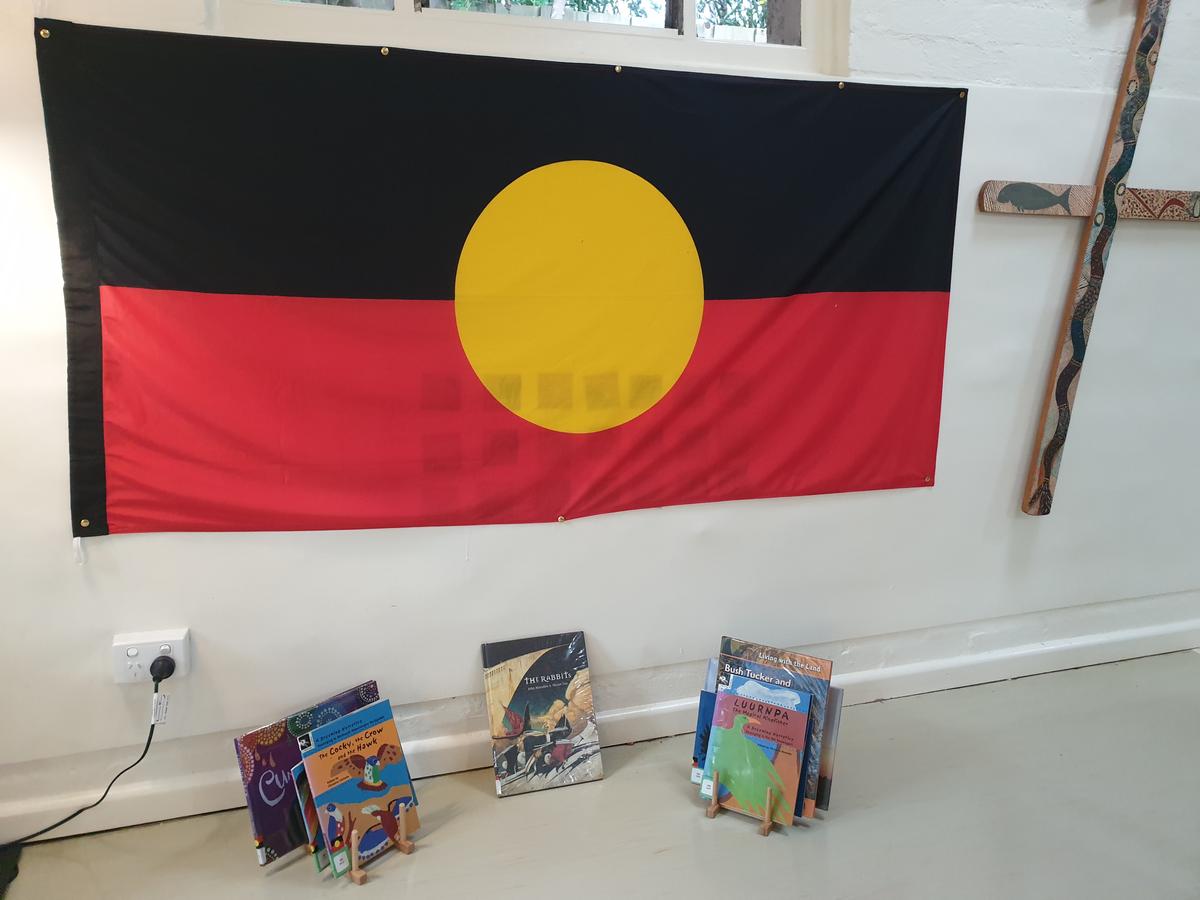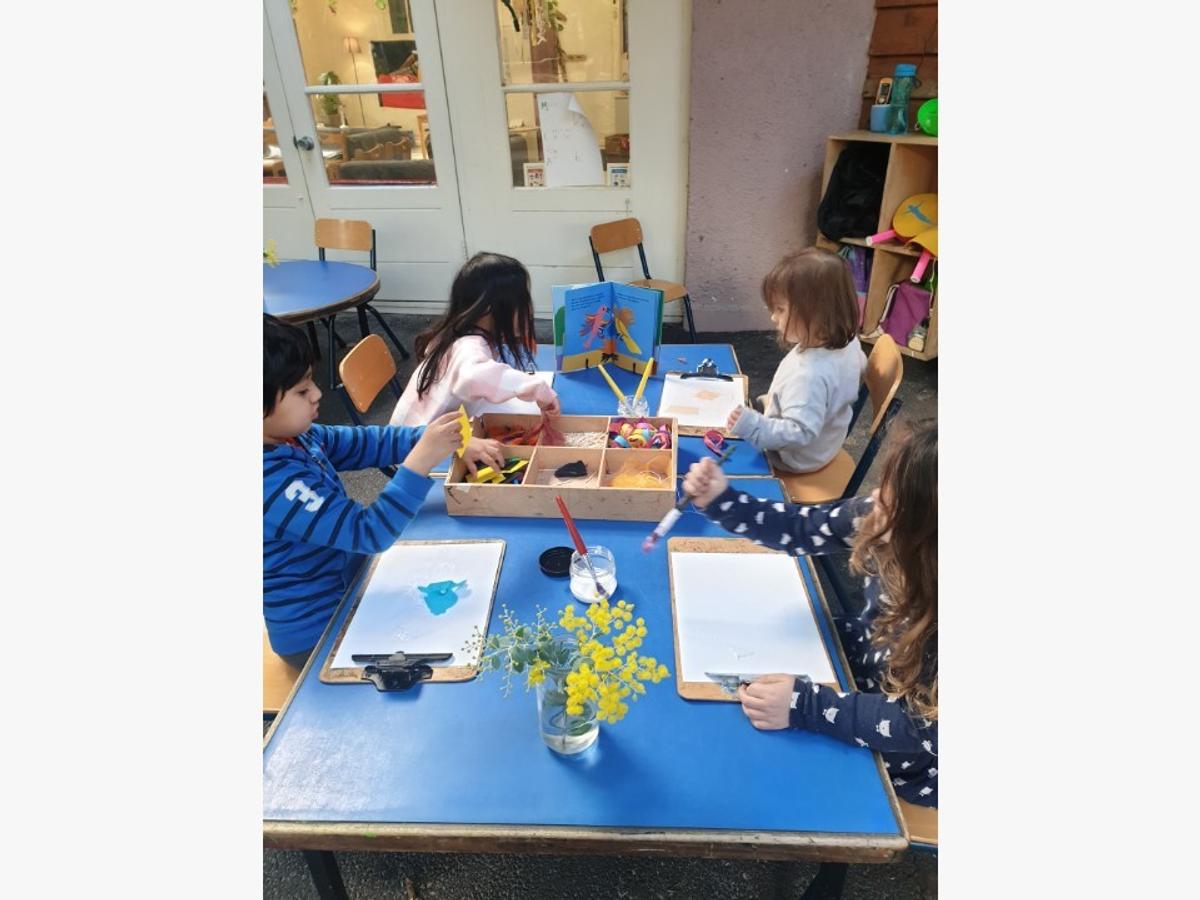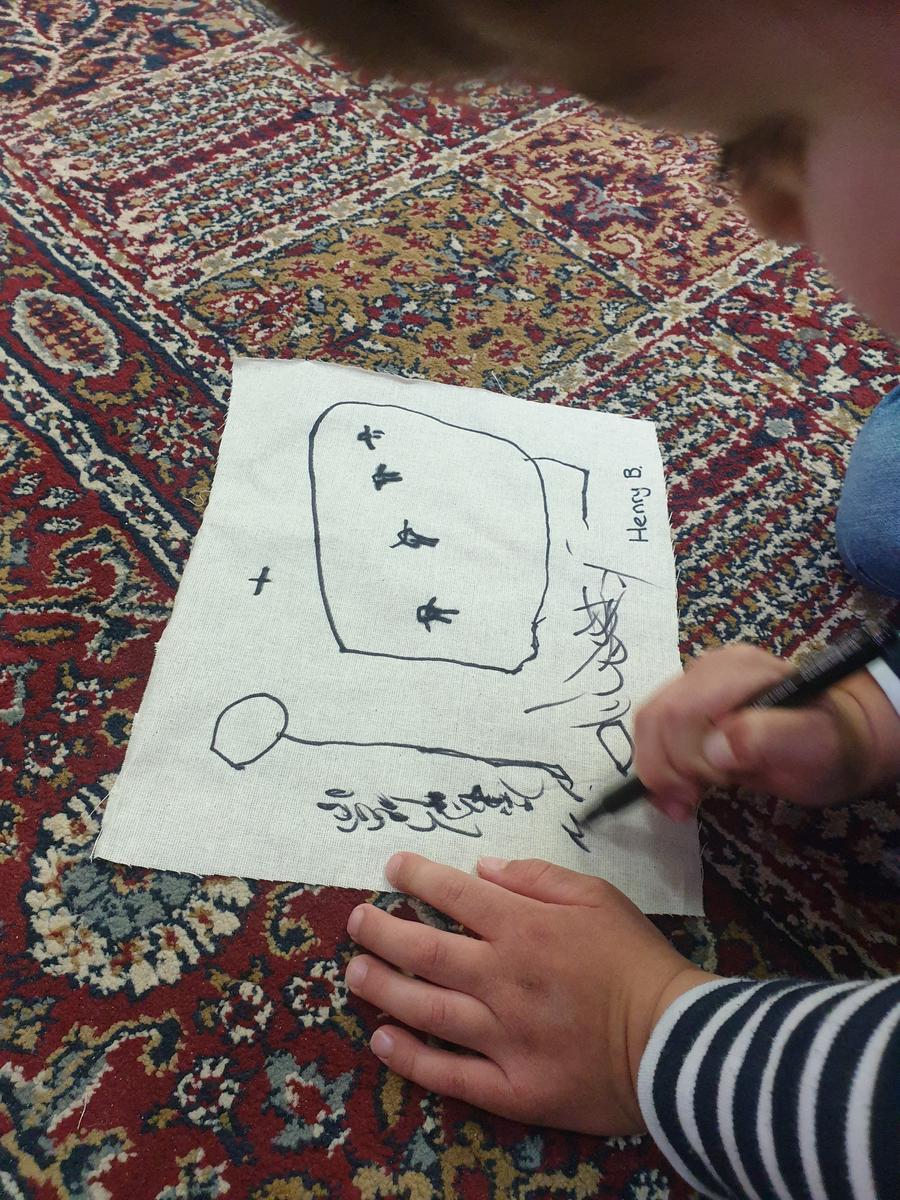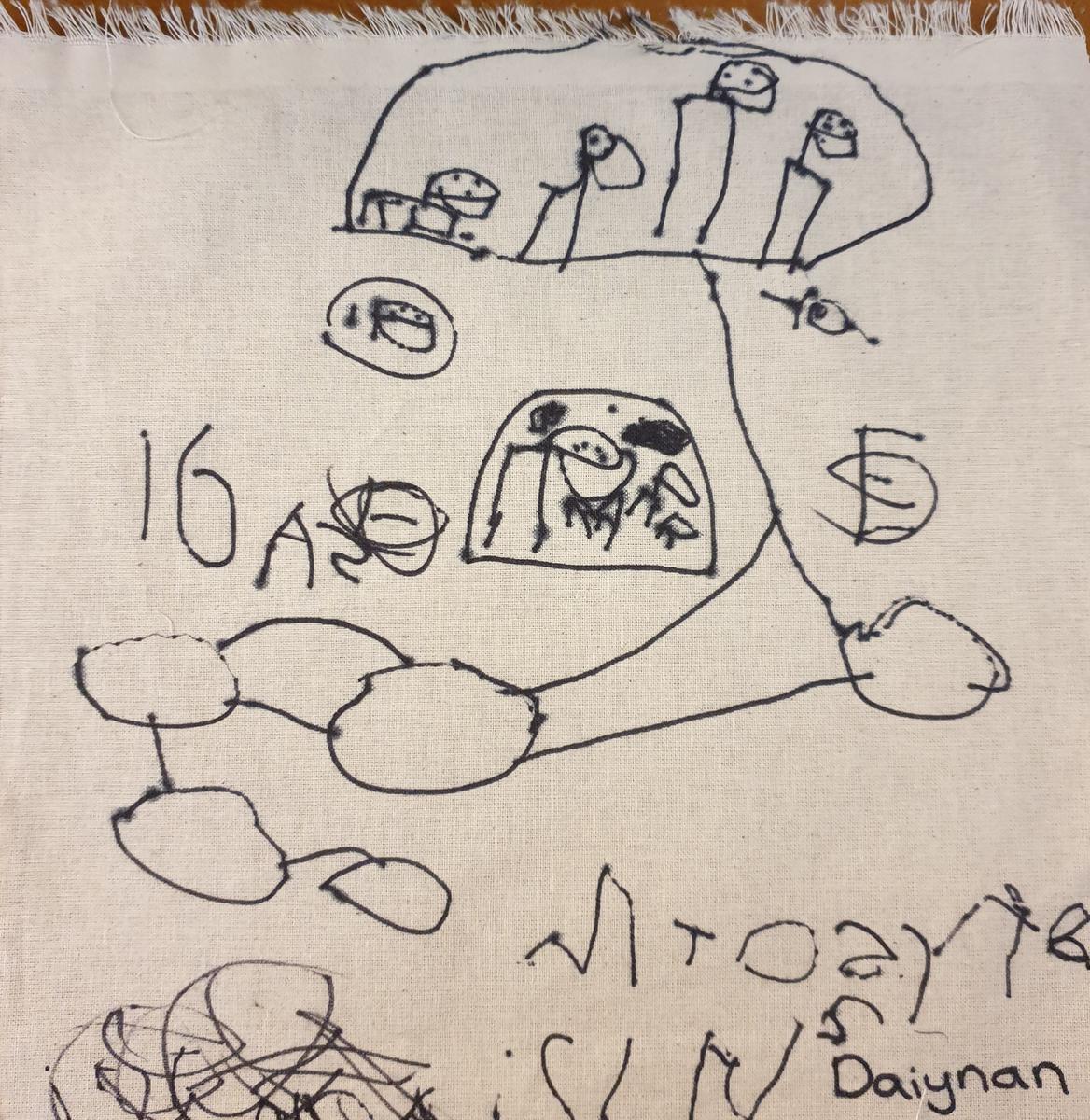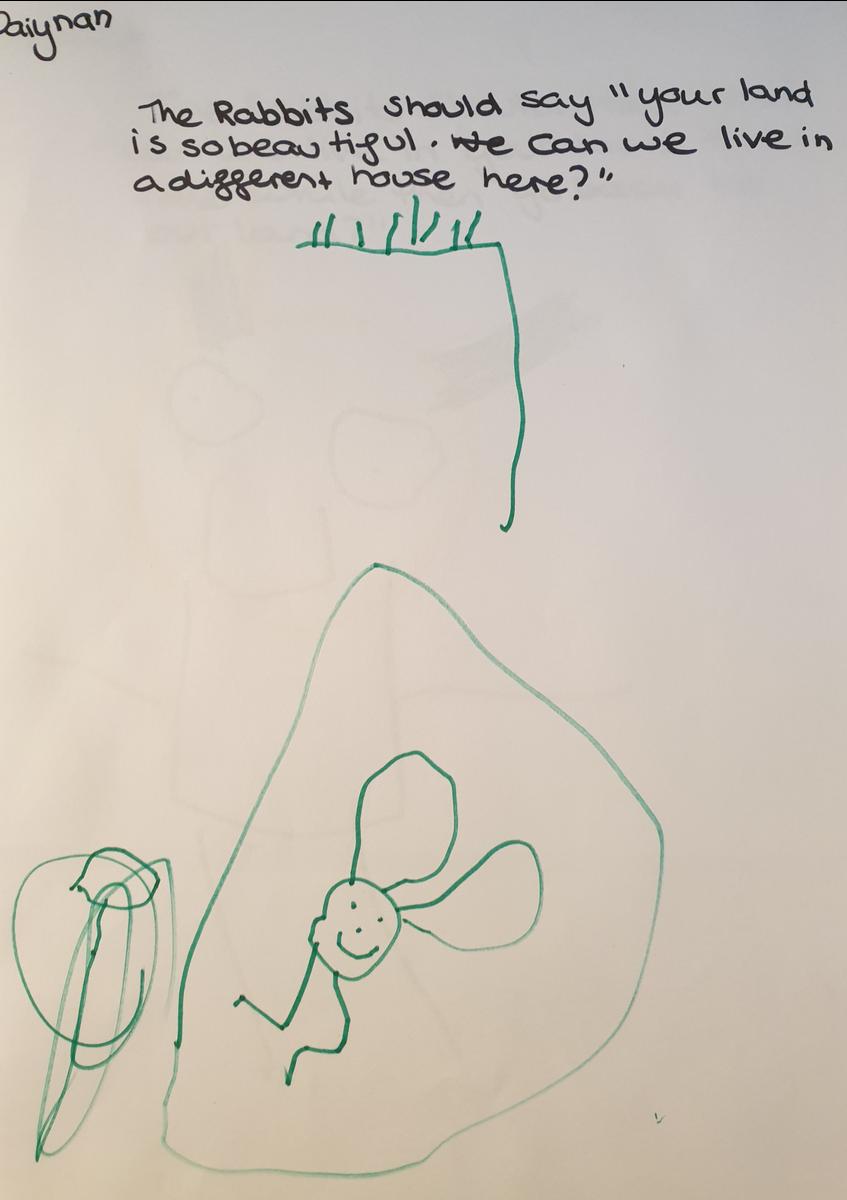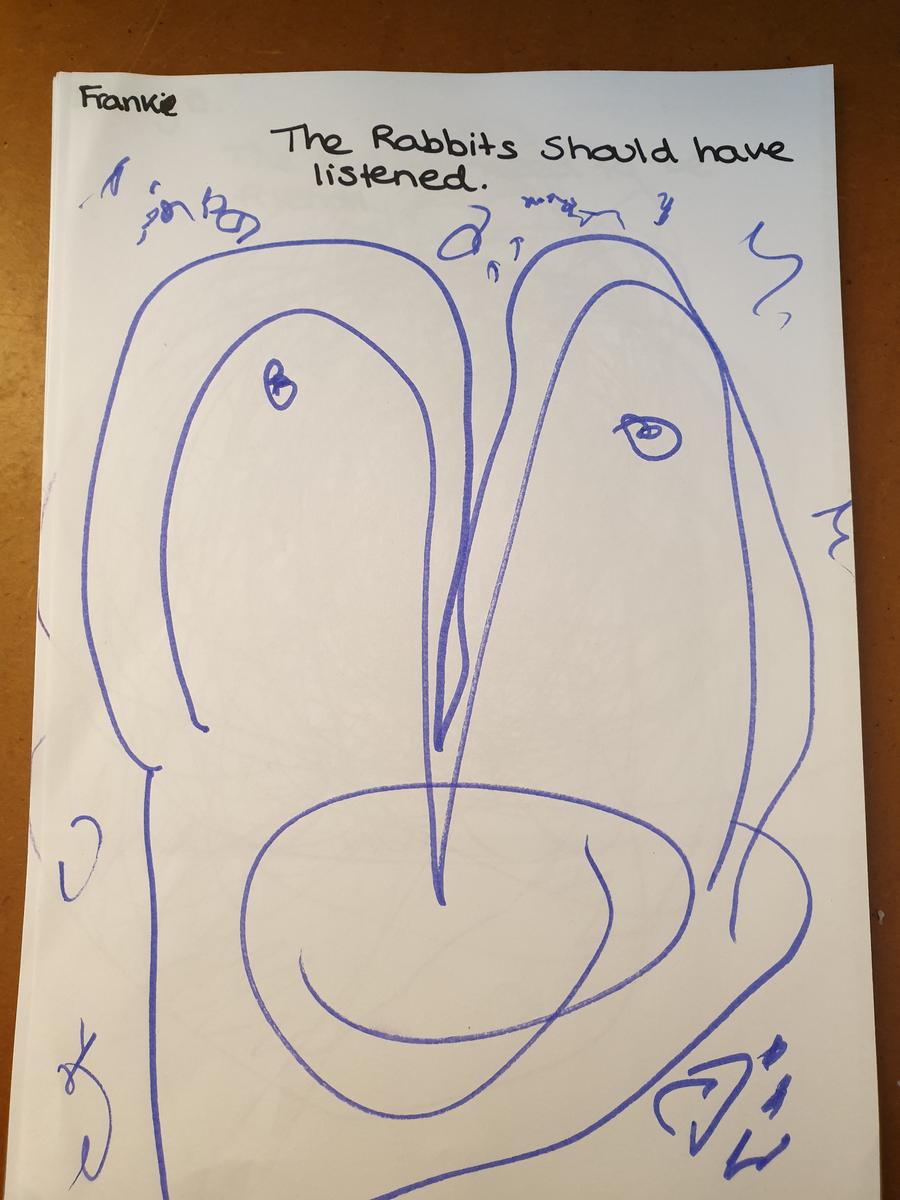Kindergarten
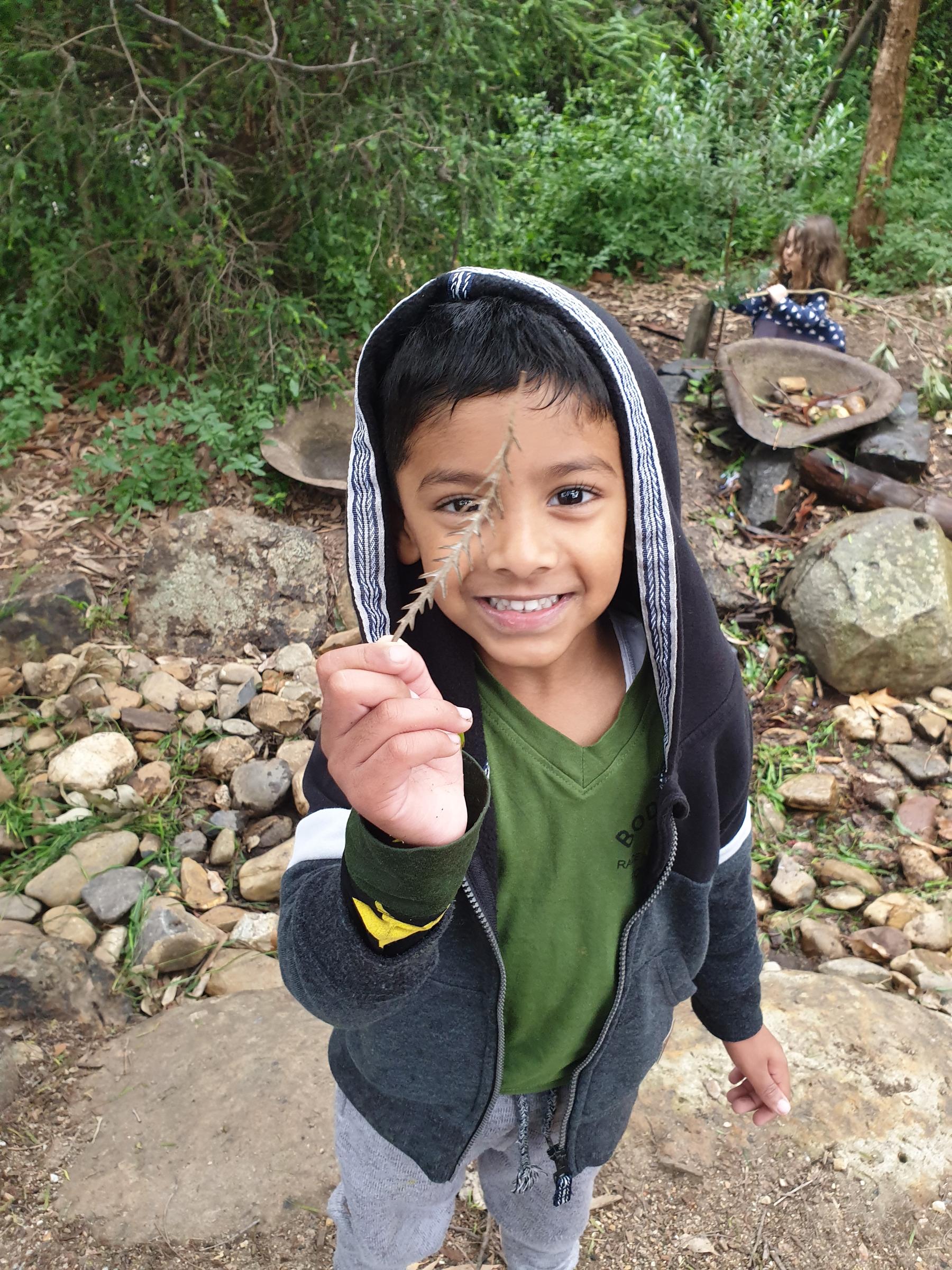
National Reconciliation Week
In Kindergarten, we have been exploring new learning through our engagement with National Reconciliation Week. This learning has encouraged children to view scenarios and resources from different perspectives, and invited them to think reflectively and empathetically.
We began our journey by learning about the word reconciliation. What does it mean? When might we see reconciliation happening at school? Why is it important?
We moved on to learning why reconciliation is so important in Australia. We looked at the Aboriginal flag and discussed its symbolism. Some children had prior knowledge which they were eager to share. We read the book ‘The Rabbits’ which tells an allegorical story of the history of colonisation in Australia and the actions of the ‘Rabbits’ (colonisers) and the effects on the ‘Possums’ (Aboriginal Australians) and their land. We learnt that this story was true, and the children had many comments and questions. A long, deep discussion ensued. The children were invited to verbalise and illustrate alternative endings to the story and ideas for action. Their responses were reflective, empathetic, thoughtful, and emotionally mature.
Since reading ‘The Rabbits’ some children have wanted to revisit the book daily. It is amazing to see their interest in exploring mature concepts and applying their learning across contexts and scale – for example, when discussing if it is right to remove a millipede from its natural home and take away its freedom.
We have enjoyed engaging with books about Bush Tucker and Bush Medicine, places in Australia through the eyes of Aboriginal narrators and Dreamtime stories. We explored two Dreamtime stories as a group: ‘The Cocky, The Hawk, and The Crow’ and ‘Tiddalick the Frog’.
We learnt about how Dreamtime stories contain learning and information about nature, science, and communities. The children were reflective as they thought about what new knowledge they gained from the stories, highlighting that they had learnt hawks hunt for snakes and lizards; burning materials in a fire turns them black; what is left behind after a fire is known as white ash; and that water is an important resource we need to share with people, plants, and animals. The children were invited to respond to the stories through collage, and to consider making their own learning narratives about science and nature.
One child asked if the stories “are real”. This led to an interesting group discussion about how what is real for one person may not be real for another. The children agreed that this was okay, we don’t all have to believe the same things! The children also decided that it is a good thing for the people of the world to have diverse stories, lives, and beliefs as it means we can learn many different things from many different people. The children felt strongly that just because someone might think or live in a different way to us, it doesn’t mean that their way is wrong, and that it would be “very not fair” to try and make everyone the same.
We have also been learning about the expertise Aboriginal people have about nature and environmental patterns. We are so fortunate to be learning in an environment abundant with plant and animal life. At Bush School, we took the time to reflect on this, encouraging the children to experience the environment using smell and hearing. The children closed their eyes and fell silent, appreciating and connecting to the land. They noted that they heard birdsong and the wind in the trees, and that they could smell leaves and the smoke remnants from the fire. We thanked the land as we left and reminded ourselves of our role in its care. We discussed how we are here now on this land, and that means we have a responsibility to look after it in respect of people who have taken care of it before us, the people and plants/animals who are here now, and for those who might be on this land in the future.
This week, we learnt about the tradition of Possum Skin cloaks. Aboriginal babies are often gifted a Possum Skin cloak at birth and swaddled in it. On the skin side, family members and Elders illustrate significant family traits and moments as the child grows. When the person grows old and passes away, they may be buried in their cloak which tells the story of their life. Drawing inspiration from this, we have been working on our own ‘story blanket’. Each child is illustrating a square of fabric about their life journey so far. We will then stitch the squares together so that our individual stories become our shared story.
It has been wonderful to see the children incorporating their new understandings into child-led play, and engaging with their environments from a new perspective. Here are a few lovely examples:
- Daiynan and Yahya using the counting cubes to make “a huge, long Rainbow Snake from the Aboriginal Story.”
- Layla deciding to quietly recite our Acknowledgement of Country to herself, complete with actions, during rest and relaxation time.
- Xavier finding some interesting sticks and logs at Bush School and noting “these look like Aboriginal sticks” before sharing his knowledge of how Aboriginal musical instruments are sometimes made.
We are enjoying this journey at Kindergarten, and hope to continue our learning about reconciliation and Aboriginal culture well beyond Reconciliation Week!
Lara Ronalds, Poppy Woodhouse &
Courtney Booth
Kindergarten Teachers
lara.ronalds@preshil.vic.edu.au

